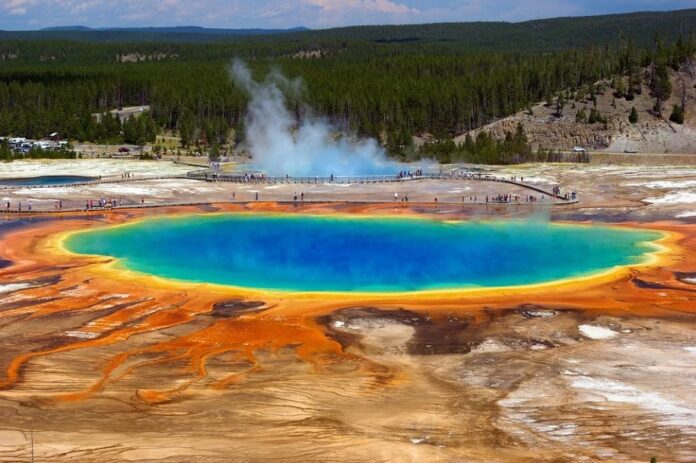Human beings have spent millennia trying to answer a question: how did life arise on Earth? The first observations that tried to unravel this great enigma date back to the fourth century BC. and. c. The thinkers of the time tried to understand what happened when food scraps became covered with worms in a few days, or when tadpoles appeared in barren muddy pools. Illustrious scientists such as Aristotle, Van Helmont and Needham then declared themselves in favor of a subtle magical forcewhich they considered responsible for the spontaneous development of life where there was none before.
It was not until the middle of the 19th century that the brilliant French chemist, physicist, mathematician and bacteriologist Louis Pasteur, together with other renowned scientists, refuted this erroneous interpretation once and for all. From there, the focus of interest moved to the study of the structure, composition and dynamics of planet Earth. New data was discovered that suggested that organic matter could be generated from inorganic precursor compounds (abiogenesis).
Oparin, volcanoes and life
And then came the conjectures of a Soviet-born biologist and biochemist named Aleksandr Ivánovich Oparin, the first to consider that the 30-kilometer average thickness of the earth’s crust, formed basically by rock of magmatic origin, was proof of the great volcanic activity of the primitive Earth.
Thus, with only a few hints, Oparin put forward in 1924 his famous theory on the effects of this great volcanic activity, also known as the Oparin-Haldane hypothesis because, simultaneously, the British scientist JBS Haldane was conceiving a quite similar theory. . The persistence of this activity for millions of years would have caused the humidity saturation of the atmosphere and the subsequent condensation of water in the form of rain capable of dragging molecules such as organic and inorganic acids.
In addition, in these suffocating conditions, ultraviolet radiation and the frequent electrical discharges produced by lightning and lightning in the Earth’s atmosphere would have generated the opportune chemical reactions to form basic substances for life on Earth. wells on the hot rocks.
To testify to this primitive environment of high temperatures and absence of oxygen and the first prebiotic seas you just have to visit the famous Yellowstone’s Grand Prismatic Spring, America’s largest hot spring lake and the third largest in the world. In it, the spectacular range of vivid colors, ranging from green to red, is the result of the growth of pigmented bacteria in its mineral-rich waters.
Recreating the early Earth
We still have to take another leap in time to see how the generation of some of the basic components for life was demonstrated in that great pond or primordial soup of Oparin and Haldane. We travel to 1952, when the professor of the University of Chicago and winner of the Nobel Prize in Chemistry in 1934 Harold Clayton Urey (one of the directors of the atomic bomb project), together with one of his most advanced doctoral students, Stanley Miller They took another key step.
Specifically, they formed some constituent units of proteins called amino acids –glycine, alpha alanine, beta alanine– and traces of aspartic acid and alpha aminobutyric acid from inorganic substances, that is, water, methane, ammonia and hydrogen. All this under stimulation with ultraviolet rays and electrical energy. The experiment managed to perfectly simulate the conditions prevailing on the early Earth assumed thirty years earlier within a sterile sealed assembly of interconnected glass tubes and vessels.
The story goes that it was Miller who designed and proposed the experiment that became the empirical simulation of Oparin and Haldane’s postulates to his thesis advisor. Initially Urey was not at all convinced, and invited him to abandon his idea as preposterous. However, the young scientist promised that in just six months he would get some results so that he could continue with his project. Finally, both achieved their goal: to literally recreate a sea and an atmosphere, in addition to building a condenser to reproduce the rain that fell incessantly on the primitive Earth billions of years ago.
vital components
Subsequently, following the procedure and varying the type and amounts of the reagents described by Miller and Urey, it has been possible to generate other vital components such as nucleic acids and adenosine triphosphate, the energy currency used by living organisms to perform all their functions.
This experience, together with new knowledge about DNA and RNA, the possible existence of prebiotic conditions on other planets, the announcement of fossils found in meteorites from Mars and the recent discovery of the oldest thermal fossilshave once again boosted interest in the study of the origin of life.
In short, the investigations of Oparin and Miller, among many others, were able to illuminate the first stages of the long journey since the dawn of life on planet Earth (~3.8 billion years). According to them, the synthesis of organic compounds was possible on the primitive Earth, but not spontaneously, but rather as a result of very opportune chemical reactions.
The study on the origin of life is a fascinating example of the wonderful imagination and experimental skill that, between laboratory tubes and fossils, has managed to solve one of the great enigmas for human knowledge.
Reference article: https://theconversation.com/asi-desvelo-la-ciencia-el-origin-de-la-vida-183935













